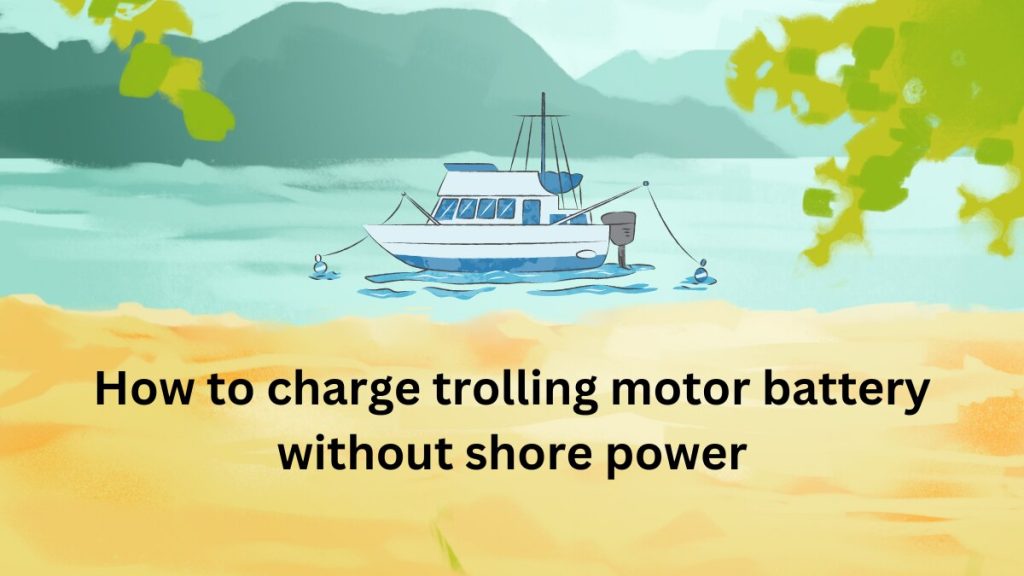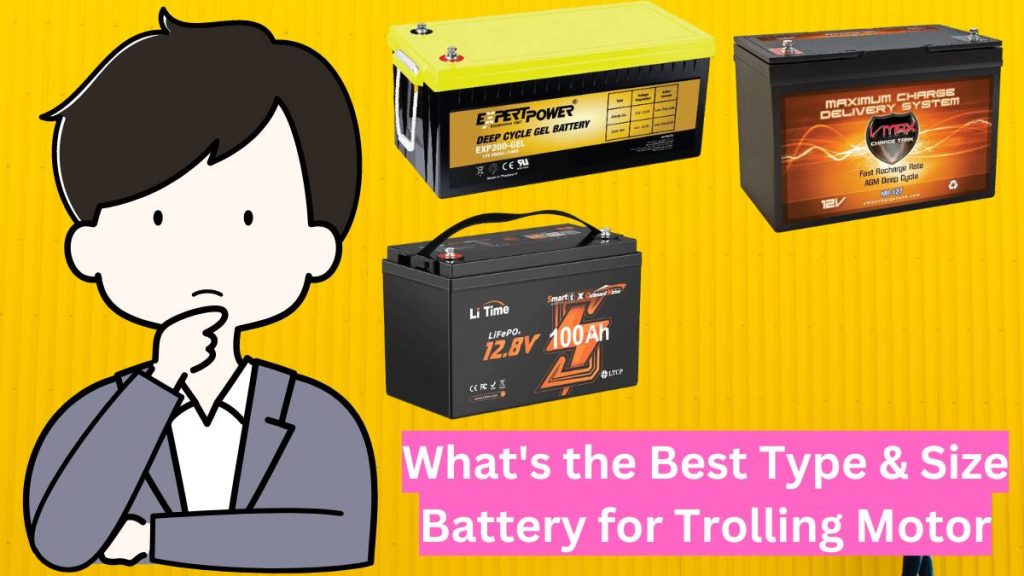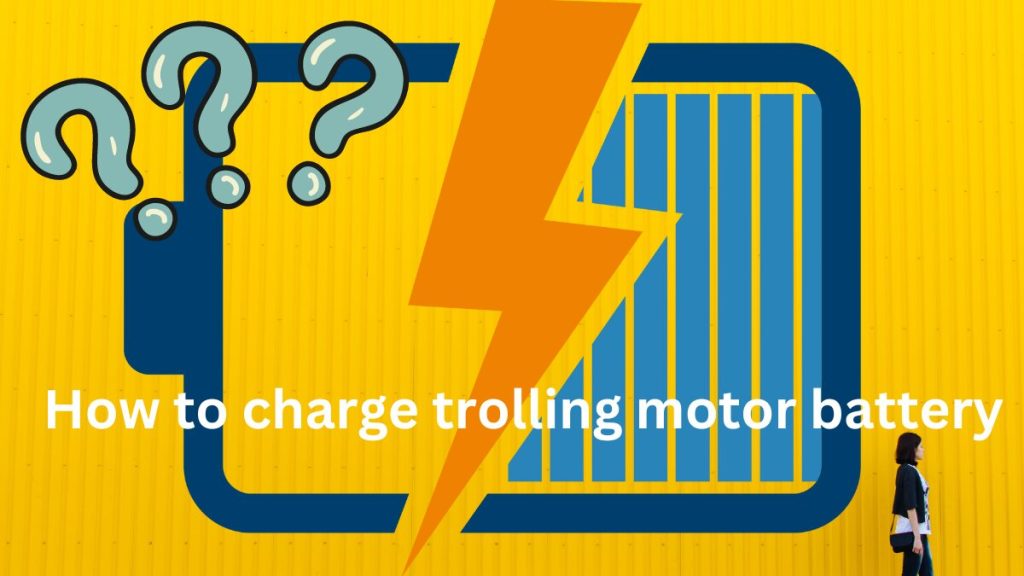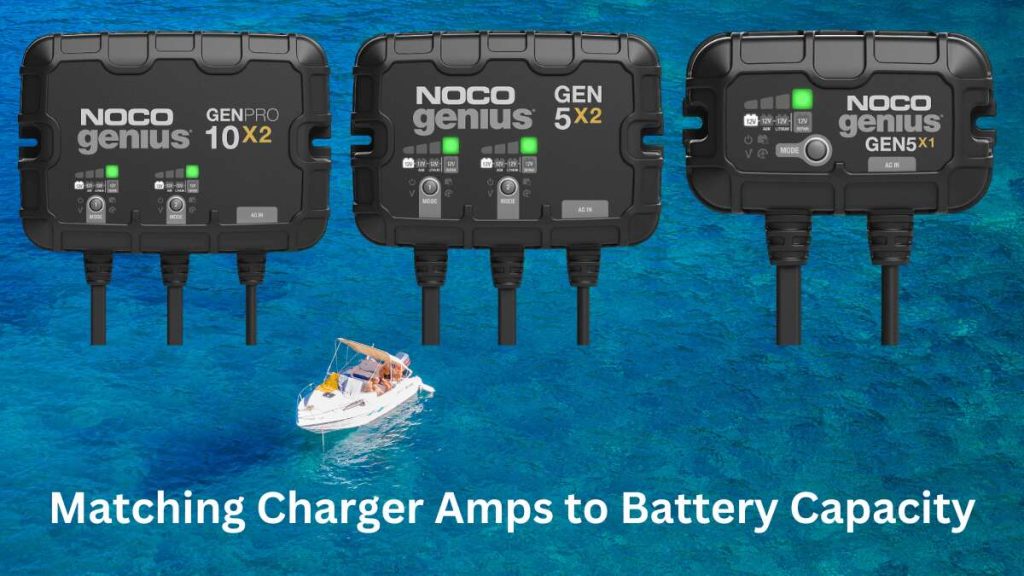If you’re an avid angler or boater, you know that a reliable trolling motor is essential for navigating the waters smoothly. However, one challenge that often arises during extended trips or remote outings is figuring out how to charge trolling motor battery without shore power. Being away from the convenience of shore power can pose a significant problem if you’re not prepared, as a depleted battery can quickly end a day on the water. But don’t let this worry you! There are several practical and innovative solutions available to keep your trolling motor battery charged even when you’re far from traditional power sources.
In this guide, we’ll explore various methods and technologies designed to solve the problem of charging your battery off the grid. From harnessing the power of the sun with solar chargers to utilizing portable generators and even wind turbines, there are effective strategies to ensure your trolling motor remains operational. Understanding how to charge trolling motor battery without shore power is not just about having backup power—it’s about ensuring you have a seamless and enjoyable boating experience. Whether you’re planning a fishing trip in a remote lake or a multi-day adventure on the open sea, knowing your options and preparing accordingly can make all the difference. Let’s dive into the various ways you can keep your battery charged and your boat on the move, regardless of your proximity to shore power.
Importance of Charging Trolling Motor Batteries
Charging trolling motor batteries is crucial for maintaining reliable performance on the water. A fully charged battery ensures that your trolling motor operates smoothly, providing consistent power for navigation and fishing. Proper charging extends the battery’s lifespan and avoids unexpected failures during critical moments. Regular charging also ensures you’re always prepared for long trips, reducing the risk of getting stranded. In essence, keeping your trolling motor battery charged is key to a successful and enjoyable boating experience.
how to charge trolling motor battery without shore power
Challenges Without Shore Power
Charging a trolling motor battery without shore power presents several challenges:
1. Limited Charging Options:
- Remote Locations: Many fishing spots are remote and lack access to power outlets or electrical grids. This limits the available charging options.
- Off-Grid Conditions: Some areas may not have any power infrastructure at all, making it impossible to connect to the grid for charging.
2. Weather Dependence:
- Solar and Wind Power: Alternative energy sources like solar and wind power are often used for charging in remote locations. However, their effectiveness depends on weather conditions. Cloudy days or low wind speeds can significantly reduce the amount of energy generated.
3. Battery Capacity and Usage:
- Extended Trips: Longer fishing trips can deplete batteries quickly, especially when using high-powered trolling motors. This requires frequent charging, which can be challenging without shore power.
- Frequent Charging: Frequent charging can shorten the lifespan of the battery, especially if it is not done properly or if the battery is subjected to excessive heat or cold.
4. Maintenance and Safety:
- Battery Care: Proper battery maintenance is crucial for optimal performance and longevity. This includes tasks like checking water levels (for lead-acid batteries), cleaning terminals, and ensuring proper ventilation. However, these tasks can be difficult in remote locations.
- Generator Safety: If using a generator for charging, it is important to follow safety guidelines to avoid accidents. This includes proper ventilation, secure placement, and proper handling of fuel.
5. Cost:
- Initial Investment: Purchasing equipment like solar panels, wind turbines, or generators can be expensive.
- Maintenance Costs: Regular maintenance and repairs for these systems can also add to the overall cost.
Understanding Trolling Motor Batteries
Types of Trolling Motor Batteries
Lead-Acid Batteries:
Flooded Lead-Acid (FLA): These batteries require regular maintenance to check and maintain water levels. They are generally more affordable but have shorter lifespans and are more susceptible to damage from vibration and extreme temperatures.
- Gel-Cell: These batteries are sealed and require less maintenance than FLA batteries. They are less susceptible to damage from vibration and can withstand deeper discharges.
- AGM (Absorbed Glass Mat): These batteries are also sealed and offer good performance and durability. They are resistant to vibration and can withstand deeper discharges than FLA batteries.
Lithium-Ion Batteries:
Lightweight and High-Capacity: Lithium-ion batteries are lightweight and offer higher energy density, longer runtimes, and faster charging times compared to lead-acid batteries.
- More Expensive: They are generally more expensive than lead-acid batteries.
Battery Specifications and Needs
- Voltage: Most trolling motors operate on 12V or 24V batteries.
- Amperage (Ah): The higher the amperage, the longer the battery can supply power.
- Discharge Rate: Some batteries are designed for high discharge rates, suitable for demanding applications.
- Cycle Life: The number of times a battery can be fully charged and discharged before its capacity significantly declines.
- Self-Discharge Rate: The rate at which a battery loses charge when not in use.
Understanding these factors will help you choose the right battery for your trolling motor and charging needs.
Charging Options Without Shore Power
a. Solar Power Chargers is a good option to charge trolling motor battery without shore power

How Solar Chargers Work
Solar chargers convert sunlight into electricity that can be used to charge batteries. They typically consist of solar panels, a charge controller, and a battery. The solar panels absorb sunlight and convert it into direct current (DC) electricity. The charge controller regulates the flow of electricity to prevent overcharging the battery. The battery stores the electricity for later use.
Choosing the Right Solar Charger
When selecting a solar charger, consider the following factors:
- Battery Type: The type of battery you use will determine the compatibility with the solar charger. Some chargers are designed for lead-acid batteries, while others are suitable for lithium-ion batteries.
- Wattage: The wattage of the solar panels should be sufficient to meet your charging needs. Consider the size of your battery and the amount of sunlight your location receives.
- Charge Controller: A good-quality charge controller is essential for protecting your battery and ensuring efficient charging. Look for a controller with features like temperature compensation and overcharge protection.
- Portability: If you need a portable solar charging system, consider the weight and size of the panels and the ease of setup.
Advantages of Solar Power Chargers
- Renewable Energy: Solar power is a clean and renewable energy source.
- Environmentally Friendly: Solar chargers have no harmful emissions and reduce your carbon footprint.
- Cost-Effective: Solar power can be a long-term cost-effective solution, especially if you have ample sunlight.
- Low Maintenance: Solar panels require minimal maintenance.
Disadvantages of Solar Power Chargers
- Initial Cost: The initial investment for solar panels and a charge controller can be higher.
- Weather Dependence: The efficiency of solar chargers depends on sunlight availability. Cloudy days or shaded areas can reduce their effectiveness.
- Storage Limitations: Solar chargers may not be suitable for charging large batteries or for extended periods without sufficient sunlight.
b. Portable Generators
Advantages of Portable Generators
- Flexibility: Portable generators can be used in various locations and provide power for different applications.
- Quick Charging: Generators can charge batteries quickly, especially for emergency situations.
- Reliable Power: Generators offer a reliable and consistent power source.
- Multiple Uses: Generators can also be used to power other appliances and equipment.
Generator Maintenance Tips
- Regular Oil Changes: Change the generator’s oil according to the manufacturer’s recommendations.
- Clean Air Filter: A clean air filter ensures optimal performance and prevents engine damage.
- Inspect Spark Plugs: Replace worn-out spark plugs for efficient operation.
- Store Properly: When storing the generator, drain the fuel to prevent fuel deterioration.

c. Wind Turbines
How Wind Turbines Generate Power to charge trolling motor battery without shore power
Wind turbines convert the kinetic energy of the wind into electricity. The blades of the turbine spin as the wind blows, turning a generator inside the turbine. The generator produces electricity that can be stored in a battery.
Factors Affecting Wind Turbine Efficiency
- Wind Speed: The efficiency of a wind turbine depends on the wind speed. Higher wind speeds produce more electricity.
- Wind Direction: The turbine should be positioned to face the prevailing winds for optimal efficiency.
- Turbine Size: Larger turbines can generate more power but require more space and may be less suitable for smaller applications.
- Location: The location should have consistent wind conditions with minimal obstructions.
How to Set Up Your Charging System to charge trolling motor battery without shore power
Installing Solar Panels
- Choose a Suitable Location: Select a location with ample sunlight exposure and minimal obstructions.
- Mount the Panels: Mount the solar panels securely to a roof, ground mount, or other stable structure.
- Connect Wiring: Connect the wiring from the solar panels to the charge controller.
Mounting and Positioning
- Tilt Angle: Adjust the tilt angle of the solar panels to optimize sunlight absorption based on your location and season.
- Orientation: Orient the panels towards the south (in the Northern Hemisphere) or north (in the Southern Hemisphere) to maximize sunlight exposure.
Connecting to the Battery
- Connect Wires: Connect the wires from the charge controller to the battery terminals, ensuring proper polarity.
- Configure Settings: Configure the charge controller settings according to the battery type and charging requirements.
Using a Portable Generator
- Safety Precautions: Follow safety guidelines when using a generator, including proper ventilation, secure placement, and handling of fuel.
- Connect to Battery: Connect the generator’s output to the battery using appropriate cables and connectors.
- Monitor Charging: Monitor the battery’s charging status and adjust the generator’s output as needed.
Implementing Wind Turbines
- Installation and Setup: Install the wind turbine on a tall pole or tower in a location with consistent wind conditions.
- Connect to Battery: Connect the wires from the wind turbine to the battery through a charge controller.
- Adjust Settings: Adjust the turbine’s settings to optimize performance based on the wind conditions.
Maintenance Tips for Optimal Charging
- Regular Battery Checks: Check the battery’s water levels (if applicable), voltage, and specific gravity regularly.
- Clean Connectors: Clean the connectors and terminals to ensure good electrical contact.
- Inspect Solar Panels: Inspect solar panels for any damage or debris that may affect their efficiency.
- Maintain Wind Turbines: Regularly inspect and clean the blades and components of wind turbines.
- Monitor Charging Systems: Monitor the charging systems for any signs of problems or inefficiencies.
By following these guidelines, you can effectively set up and maintain your charging system without shore power.
Keeping Equipment Clean and Functional
Maintaining the cleanliness and functionality of your trolling motor battery charging equipment is essential for ensuring optimal performance and longevity. Regular cleaning and maintenance can help prevent issues such as corrosion, reduced efficiency, and equipment failure.
Solar Power Chargers to charge trolling motor battery without shore power
- Cleaning Solar Panels:
- Remove Debris: Regularly remove dirt, leaves, and other debris from the surface of the solar panels. This will help maximize sunlight absorption.
- Use Mild Detergent: If necessary, gently clean the panels with a mild detergent solution and a soft cloth. Avoid abrasive materials that could scratch the surface.
- Inspect Wiring: Check the wiring for any signs of damage, corrosion, or loose connections. Tighten any loose connections and repair damaged wires as needed.
Portable Generators to charge trolling motor battery without shore power
- Clean Air Filter: Regularly clean or replace the air filter to ensure proper airflow and prevent engine damage.
- Inspect Spark Plugs: Inspect the spark plugs for wear and replace them as needed. Worn-out spark plugs can reduce engine performance and fuel efficiency.
- Remove Carbon Buildup: If you notice excessive carbon buildup in the engine, have it cleaned by a professional mechanic. Carbon buildup can reduce engine power and increase fuel consumption.
- Drain Fuel: When storing the generator for extended periods, drain the fuel to prevent fuel deterioration.
Wind Turbines how charge trolling motor battery without shore power
- Clean Blades: Regularly clean the blades of the wind turbine to remove dirt, insects, and other debris that can affect performance.
- Inspect Bearings: Inspect the bearings for signs of wear or damage. Replace any faulty bearings to ensure smooth operation.
- Lubricate Moving Parts: Lubricate moving parts according to the manufacturer’s recommendations. Proper lubrication helps prevent friction and wear.
Battery Maintenance
- Check Water Levels: For lead-acid batteries, regularly check the water levels and add distilled water as needed. Low water levels can lead to reduced capacity and shortened battery life.
- Clean Terminals: Clean the battery terminals with a wire brush or terminal cleaner to remove corrosion. Corrosion can prevent proper electrical contact and reduce charging efficiency.
- Store Properly: When storing the battery for extended periods, store it in a cool, dry place. Avoid extreme temperatures that can damage the battery.
Additional Tips
- Inspect Wiring: Regularly inspect all wiring for signs of damage, corrosion, or loose connections. Tighten any loose connections and repair damaged wires as needed.
- Follow Manufacturer’s Instructions: Always follow the manufacturer’s instructions for cleaning and maintenance.
- Consider Professional Maintenance: For complex systems or if you are unsure about maintenance procedures, consider hiring a professional to inspect and maintain your equipment.
Conclusion: how to charge trolling motor battery without shore power
Charging a trolling motor battery without shore power requires careful planning and the selection of suitable equipment. By understanding the available options, such as solar power chargers, portable generators, and wind turbines, you can find a solution that best suits your needs and circumstances. Regular maintenance and proper care of your equipment are essential for ensuring optimal performance and longevity. By following the guidelines outlined in this guide, you can successfully charge your trolling motor battery without relying on shore power and enjoy your fishing adventures to the fullest.





